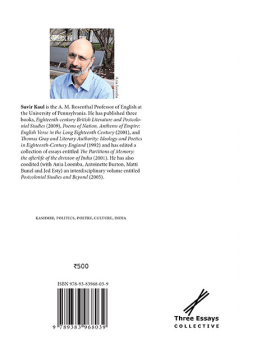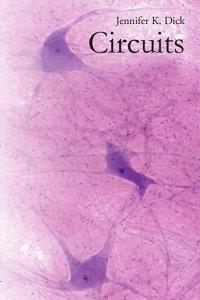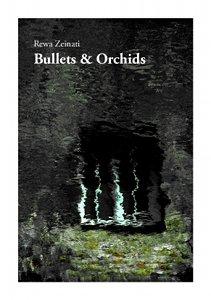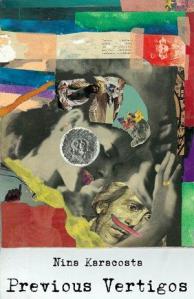
Editor’s Note:This is our first review of an essay collection alongside poetry.
__
To read “Of Gardens and of Graves” is to witness the coming to life of Yeats’ famous line: “A terrible beauty is born”. It is to be reminded, if ever a reminder was needed, of the lingering pain that seeps slowly and eternally through the flooded scars of Kashmir, the scowl of the last half a century that darkens the fate of every subject, born under the auspices of its melancholic sky. It is hard to classify the book into a genre as it repudiates traditional hierarchies by refusing to be neatly categorized into one – it is simultaneously a memoir, a critical commentary, an anthology, collaboration, and a history all rolled into one, held together by a single source- Kashmir. An arbitrary classification of the book structure could be that the book comprises of three basic divisions: Essays, translations and photographs. On a reading, though, the narratives under each rubric just blend with each other, without any manifest hierarchy.
However, the essays appear to be tied loosely in a structural evolution, and so it appears fit to discuss them first. The first essay ‘Visiting Kashmir, Re-learning Kashmir’, explores the identity politics of the valley through a biographical tilt. As the comma in the title suggests, the essay is explores the neat schism between the two eras of Kashmir: pre and post 90’s, an idyllic prelapsarian world of nostalgic summer vacations, harmony and beauty, and a postlapsarian world of bullets, blood and trauma. Unlike most such narratives of Kashmir, the essay doesn’t delve into a comparison of the two states to lament the loss of the idyll and place them on isolated axes of disconnect. The fallacy of nostalgia that Fanon warned against is absent here, the signs of privilege and dissonance are strewn across the narrative. The cloying romanticism of most narratives that deal with Kashmir before 90’s is not found here, and so the reader is allowed to proceed without getting inundated in a surfeit of manufactured memories and claims of an artificial Kashmir without any undercurrents of difference. The prelapsarian world is the world where the grandparents are revered academics, summer holidays are a means of connecting with heritage – a means to temporarily suspend the duality of based in India and identifying oneself as a Kashmiri. The signs are already there – the study of the history of the evolution of the state as a constituent of Indian republic yields uncomfortable contradictions. While, article 370 stands as a reminder of the special circumstances in which Kashmir was ‘acceded’ to India, and a promise of plebiscite placated the international community, the history on the ground followed a different trajectory. Manipulated elections became the norm, and any attempt to reinforce the autonomous character of Kashmir is met with derision, as Sheikh Mohammad Abdullah learnt to his chagrin in 1952. The 1990’s arrive with the KP exodus, and so Kashmir disappears off the radar, as the pushes and pulls of a life in US take primacy.
Fast forward to 2003, the comparative subsiding of armed militancy allows the family to shift back to their ancestral home in Srinagar. The essay traces the descent of the pastoral idyll into an anarchic state where unaccountability rules the roost. The hierarchies of power have clearly been established, as the elite have’s zoom past the perplexed commoners in elaborate cavalcades that have the right of way – a lesson that is even forcibly reinforced as a university professor learnt the hard way after being dragged out by hair for failing to give way to an official vehicle. The former infamous torture centers – the twin Papas (Papa 1 and Papa 2 – translated ironically as Father – a way of accepting suzerainty as in the popular slang: Who your father?) have been transformed into official buildings but they serve as a monument of Kashmiri trauma – the conceived space scarcely having undergone any change to merit any change in the lived space, to borrow Lefebvre’s analogy.
Another, metamorphosis that plays out is the appropriation of KP identity as jingoistic national identity – an aspect that plays out repeatedly on social networking sites. All the KP sites have been militarized with large hoardings erected by armed forces appear en route shrines like Amarnath welcoming the pilgrims, thereby indicating the exclusion of the Kashmiri Muslim from the networks of empathy. Identity has been irretrievably tied with religion and religion is synonymous with nationality. All identity markers: accent, dress and appearance are measured on these axes and determine whether the subject will be the recipient of an angry bullet or a friendly smile. So, it comes as no surprise when the author’s mother who wears a sari, is on familiar talking terms with the soldiers, allowed to walk about when the same privilege would be denied to an ordinary Kashmiri Muslim. The narrative is secessionist Kashmiri Muslim fit to be crushed and disenfranchised versus Indian Hindu nation. This binary was never more apparent during the recent floods, when the common perception was that the ‘Hindu’ non-local labour force was the only beneficiary of the official rescue efforts, along with the elite of the land. The diaries of 2010 catalogue the travails of both sides of the conflict – the hapless angry victimized Kashmiri pitted against an underpaid, overworked and sometimes underfed force, and the ensuing result is tragic.
This premise is explored further in the second essay “My heaven is Burnin’…” that delves into the origins of the Kashmir conflict. The essay traces the emergence of the state of Jammu and Kashmir set against a general shift in the world towards a post-colonial global order as the sun faded on the imperial regimes of yore after the world wars. The essay makes a compelling argument about the substitution of post-colonial utopias by neo-colonial dystopias which replicate the modus operandi of their colonial masters. The imperialist intervention, the essay points out, forged a loose alliance of disparate communities yoked together by the agency of and consequently opposed to the imperial force, in this particular case – the British, to fight for nationhood based upon the premise that local aspirations would receive more recognition in new post colonial structures of governance as compared to the colonial centripetal systems. In the case of Kashmir, a vassal state, the anti-colonial movement rose against the Dogra regime, who obtained the absolute power over Kashmir, as a British vassal, through the infamous Treaty of Amritsar. The “historically abysmal levels of formal learning among Muslims” thwarted their emancipation. The Kashmiri Pandits, however, prioritized literacy and acquired an advanced level of literacy such that they were impossible to ignore in the administrative setup – being adequately literate and possessing local knowledge. The Hindu connection and literacy didn’t catapult them to higher levels of administration, though as the Dogras were determined to preserve their exclusive Rajput-Hindu identity as their claim to superiority. Discrimination against the local populace was existent at both covert and overt level, covert in case of Pandits and overt in case of Muslims who were additionally subject to an aggressive system of taxation and forced labour (beggar). The Muslim majority state thus suffered the double ignominy of being ruled by a regime, intent of preserving and promoting its Hindu credentials in scant regard of majority, and being further isolated from its ‘empowered’ Hindu minority who comprised no more than 5% of the population. The anti-colonial movement, the essay argues was therefore a confluence of several shifting strands – a demand for Muslim empowerment, class empowerment (the local peasant and artisan being the most impoverished and affected populace) and an identification with the larger anti-British struggle enacted outside the state by the Indian National congress.
The essay traces the various political and ideological contours that evolved in Kashmir after its interaction with the catastrophic accident of partition. The unusual events and startling claims of the treaty of accession, startling in the sense that they would drive hyper-nationalists to severe hysterics today, like a refusal to be assent to any future constitution of India, are sufficient to suspect any claim of willful integration of the state with the Indian republic. Over the next three decades, “politics in Kashmir continued to be a powder keg of repression”, which finally culminated in the explosive 90’s. By this time, the political issues had been simply relegated to a law and order issue and thus could be conveniently brushed aside by mobilizing a vast array of armed forces backed by the discourse of aggressive nationalism. The shift is painstakingly covered with a rich texture of detail and lucid language that leaves the reader with a profound sense of unceasing regret and loss signified best by the dotted line – a marker of continuity that completes the title.
The third essay “the Witness of Poetry” seeks to examine Kashmiri poetry as a chronicle of grief, decline and pain that serves to mould the discourses of future to some degree by serving as a means to transform consciousness – a refusal to write back into hegemonic discourses of guardianship, mentoring or regency that have variously been used as pretexts by neo-imperial regimes of Post-Colonial India. Taking its cue from the contemporary trauma theory, the essay seeks to examine what political positions can be mapped from the Kashmiri poetry, written as a response to 90’s. Elsewhere, I have pointed out that “traumatic memories are interpretative accounts and so liable to endless interpretation – “trauma is a crux, speaking to the undecidability of representation and the limits of knowledge” (Lockhrust, 2006). The narratives that emerge either in prose or poetry are therefore a belated response – an attempt to make sense out of the omissions and representations of a particular historical narrative; the disparities in the narratives only highlight the desire for creating a suitable defense mechanism that is in consonance with the prevailing socio-political mores. The literature of the 90’s reflects a sense to give form to orature – the narrative that precedes the written form, and so clear the ground for a new world order that assimilates the past[1].”
The essay then seeks to examine two poems that cover two narratives – the Kashmiri Muslim voice of trauma due to displacement from an idyllic past, and a Kashmiri Pandit voice lamenting the exile from homeland. Both voices are united in trying to seek solutions to the jigsaw – “the compendium of the sights and sounds, relationships, and every day practices” that lies shattered in the wake of armed insurgency. The Kashmiri Muslim voice represented by a ghazal by Mohiuddin Masarat is examined as cataloguing the dissonance, the rupture from normatively and hence evolving a “poetics of victimage”. The argument is scholarly and indeed well thought out except for a small issue that clouds the whole argument. The word ‘mot’ is translated as the lunatic (seer) in the ghazal, and the argument revolves a juxtaposition of the poet-lunatic in evolving a poetics of resistance. The term is often used in Kashmiri poetry as a reference to a beloved, a vernacular substitution. Will the argument of juxtaposition still hold if the meaning of mot is altered?
The argument will suffer to a minor degree, but the larger premise of a narrator engaged in ‘solipsistic disavowal’ will still hold. The Kashmiri-Pandit voice represented by a ghazal by Brij Nath Betaab is typical of Diaspora discourse, and the approach adopted by it can be traced to the famous poem by Akhter Shirani – O des say aanay walay bata (O traveler from my land, speak). The poem presents a series of images that constituted the idyllic pre-exile past, each stanza interspersed with the realization of the impossibility of fulfilling the erasure enacted by exile – does the practice still continue in the present. For the Diaspora, the homeland frozen in time and space, the incongruity of the alien Indian culture repeatedly evokes a memory to lacerate the wound of impossible history as it unfolds.The fourth essay “Indian Empire (and the case of Kashmir” completes the remarkable quartet of essays. It makes a well wrought answer to the question that every inhabitant from Kashmir faces in a lifetime: Why have progressive Indian intellectuals and politicians found the Kashmir problem puzzling? An analysis of the practices of Post-Colonial nations especially India reveals that the colonial imprint is too indelible to have allowed a complete break from colonial pasts as independence is imagined to have enacted. In the case of India, and other Post Colonial nations it has only served to induce a nationalist amnesia that refutes any interrogation of practices that allow suspension of fundamental principles of democratic functioning. The aggressive nationalism left as a residue of the post colonial mobilization has only served to negate any compromise on the definition of the external boundaries of the state as outlined by the departing British. This paradox of legitimizing the writ of the colonial master deemed illegitimate otherwise for administering the state informs the practice of converting the state into a massive security apparatus to contain the restive populations that refuse to abide by these boundaries. The negation of the aspirations of the local populace, a key characteristic of the transition from colonial to post-colonial highlights the absurdity of imagining a break from past – only a transfer of power took place, in reality.
 The Indian state is placed in the context of global politics, to assess the conditions that negate any adaption of the post colonial ethos. The essay sets its argument upon a scathing analysis of a comment by C Raja Mohan – an eminent strategic affairs editor of Indian Express and a former holder of Henry A Kissinger Chair in Foreign Policy and International relations at the John W Kluge Center, Library of Congress. C Mohan argues for the evolution of an India center to facilitate the return of a Raj, enlisting the colonial period as a catalyst of bringing stability and peace to the warring and chaotic 19th and 20th centuries, overlooking conveniently the wrenching of the social fabric it caused apart from all hues of exploitation. Espousing an alliance with the primary global superpower –United States, he imagines India acting as a vassal in establishing an India center in the subcontinent giving India unparalleled access to the resources and routes of the subcontinent. India, therefore, is only following the global lead where the state is expected to modulate its policies to facilitate corporate trading and promote industrial interest. Rather than enacting transfer of democratic functions to the local constituents, the modern state acts only to extend capitalist principles set up by colonial trans-national companies like East India Company. The state’s capacity for violence directly determines its ability to exploit its resources both local and abroad to the hilt and any resistance, e.g. by Maoists only serves to invite state retribution. The political imagination is restricted to only two options: either accept economic development, surrender any attempt to wrest autonomy, or face military action.
The Indian state is placed in the context of global politics, to assess the conditions that negate any adaption of the post colonial ethos. The essay sets its argument upon a scathing analysis of a comment by C Raja Mohan – an eminent strategic affairs editor of Indian Express and a former holder of Henry A Kissinger Chair in Foreign Policy and International relations at the John W Kluge Center, Library of Congress. C Mohan argues for the evolution of an India center to facilitate the return of a Raj, enlisting the colonial period as a catalyst of bringing stability and peace to the warring and chaotic 19th and 20th centuries, overlooking conveniently the wrenching of the social fabric it caused apart from all hues of exploitation. Espousing an alliance with the primary global superpower –United States, he imagines India acting as a vassal in establishing an India center in the subcontinent giving India unparalleled access to the resources and routes of the subcontinent. India, therefore, is only following the global lead where the state is expected to modulate its policies to facilitate corporate trading and promote industrial interest. Rather than enacting transfer of democratic functions to the local constituents, the modern state acts only to extend capitalist principles set up by colonial trans-national companies like East India Company. The state’s capacity for violence directly determines its ability to exploit its resources both local and abroad to the hilt and any resistance, e.g. by Maoists only serves to invite state retribution. The political imagination is restricted to only two options: either accept economic development, surrender any attempt to wrest autonomy, or face military action.
The essay makes an extremely valid argument, about Kashmir, by placing it as a site of challenge to the Indian state’s “twinned powers of the state and multinational capital.” An analysis of the electoral trends shows the degree to which the Indian state imitates its colonial master to protect the interests of its mainland that include access to cheap hydropower, water and potential mining reserves. In a direct replication of the colonial strategy to maintain a vice like grip on its colonies, the Indian state has not permitted the state of Jammu and Kashmir to build or operate dams like Kishenganga and Baghlihar- both are built and operated by NHPC – an unit administered by the center, which charges the state for its operations, besides transferring the major chunk of power generated to mainland India. Another important and valid reason, pointed out by the essay is the mapping of Kashmir as symbolic of India’s purported secular syncretism that occupies a cherished place in the national imagination – tampering with the state’s current combination of Muslim (Kashmir) – Hindu (Jammu) and Buddhist (Ladakh) populace is irreconcilable with the nationalist-ideological imagination, and so begets no solution in the near future.
A word on the translations – though my Kashmiri especially perception of Kashmiri poetry is limited, yet I couldn’t help feeling that many translations appear to be poor cousins of the originals. There appear to be some glaring omissions and mistranslations. In Bashir Dada’s famous ghazal Bless him now, matio is translated as lost one and explained in a footnote as superseding rationality. That the word refers to beloved e.g. in matio dil ne rozan danjay (Beloved, the heart is all aflutter), as I explained earlier, has simply escaped his attention. The lost one last line in Ghulam Hassan Taskeen’s nazm: chon akh akh tsuih tse kiut bari giraan: is translated as Each one of your young, is for you, a great burden. Tsuih translates literally into breath or moment of lived existence, and so the line ought to read as as Each one of your young, is for you, a great burden. Zahirialmasa (zeher-e-almas) is inexplicably translated as Poison of diamond. Zahir-e-almas is a commonly used trope in Kashmiri poetry literally translatable into caustic poison whose effects are unbearable and painful to extreme. Some lines like so greedy I am for money I have my vision pawned, sound alien to the cadences of English poetry, to my ears. However, it is a subjective judgment and the readers will judge for themselves whether or not the translations appeal to them. Credit must be given where due, and that lies in anthologizing the works of Kashmiri poets for a larger readership. Though the selection is by no means exhaustive, as the preface confesses, yet it is a laudable attempt at examining the evolution of Kashmiri Resistance Poetry. The omission of Rehman Rahi and Naseem Shifai is certainly intriguing. Both are recognized widely as powerful voices engaged in recovering the voice of censored Kashmir. The omission of Naseem Shifai is even more surprising since her poetry is heavily influenced by feminist concerns and seeks to dramatize the severe trauma of the double subaltern – the woman, one of the worst off sections of the conflict ridden state. The book would have been the better for their inclusion. A final word on the powerful photographs of Javed Dar: they complement the narrative well, the black and white texture suits the narrative even better as the absence of color blends well with a lack of detail and life in Kashmir – a monotonous tale of death and destruction unfolds here on day to day basis, and the photographs present just that.
Overall, the book is a compelling but extremely painful read; it snuffs out any hope that we, the subjects of the beleaguered land hold that things might soon turn for the better. It appears that Marquez’s might have the final laugh: Races condemned to one hundred years of solitude did not have a second opportunity on earth. I fear the book validates this view point, and not entirely without justification. The book is a refreshing change from the myopic narratives of Kashmir, which one comes across at every juncture. Scholarly, balanced and extremely readable, the book is a welcome addition to the corpus of reading on Kashmir that includes Hindu Rulers, Muslim Subjects by Mridu Rai and Langauges of Belonging by Chitralekha Zutchi. Kashmiri scholarship is in safe hands, one wishes the same could be said about the administration.
___________________________________________________________
Lockhrust, Roger. “Mixing Memory and desire: Psychonalysis, psychology and Trauma theory.” Literary Theory and Criticism. Ed. Patricia Waugh. Oxford University Press, 2006. 501.
—
Huzaifa Pandit is a research scholar working on resistance poetry at University of Kashmir. His poems and essays have been published in various national and international journals like Indian Literature and Papercuts.




